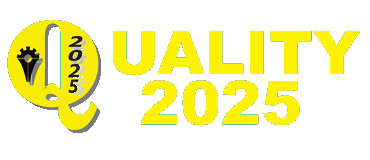| Author(s): | Keywords: |
|---|---|
| Kenan Varda, Ernad Bešlagić, Nermina Zaimović-Uzunović, Inela Hodžić (B&H) | calibration, optical 3D scanner, refrence standard, ISO 10360:13 standard, RangeVision PRO |
| Abstract: |
|---|
| The importance of measurement as a practical technical discipline is of crucial significance both in everyday life and across all sectors of industry and science. Accuracy, precision, correct measurement, and reliable calibration of measuring devices play a key role in modern industrial processes. If any of these influential parameters are unreliable, measurement results can lead to serious deviations and undesirable consequences in manufacturing processes. This paper presents the method of calibrating the RangeVision PRO optical 3D scanner using a ceramic standard, in accordance with the requirements of the international standard ISO 10360-13. The focus is placed on the calibration procedure and the evaluation of measurement accuracy using two key parameters: probing error and distortion error. By applying data analysis methods after scanning, using GOM Inspect software, deviations between measured and nominal values were identified, allowing the determination of the mentioned parameters and assessment of the scanner’s performance. |
| Cite as: |
|---|
| Kenan Varda, Ernad Bešlagić, Nermina Zaimović-Uzunović, Inela Hodžić (2025) Calibration method of the Rangevision Pro optical 3D scanner using a ceramic standard. Quality 2025 (S. Jašarević, editor), ISSN 1512-9268, Neum, B&H, 3-5 June 2025., pp. 35-42 |
DISCLAIMER: Professional – scientific papers published in Conference proceedings are published in the original. Papers were reviewed by members of the Scientific Committee. Authors are responsible for technical and linguistic correctness of the text.
WARNING: This is an open access publication which means that all content is freely available without charge to the user or his/her institution. Users are allowed to read, download, copy, distribute, print, search, or link to the full texts of the articles in this journal without asking prior permission from the publisher or the author. This is in accordance with the BOAI definition of open access.
The greatest possible effort is put to ensure that the Proceedings are complete and accurate, but it does not imply any warranty or liability. The authors and publisher have no obligation or responsibility to any person or entity in connection with any damage or loss due to the information published in the Conference Proceedings.

